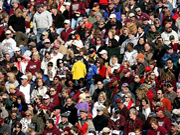Method and products

Nothing at face value
SCS recognized both the possibilities of facial recognition technology (FRT) as well as its potential hype and over-selling as soon as the technique became practicable within CCTV. As specialists within the CNI sector, we are frequently asked by clients to create dual systems. We mitigate the possible consequences of human operator fatigue at manned guarding points with algorithms drawing on artificial intelligence and the exceptional resolution of megapixel cameras.
The first duty of any responsible installer is to educate end-users wishing to implement FRT in the unchanging fundamentals of CCTV optics. Focal length, field of view and aperture remain preeminent in obtaining site images (known as the ‘probe’ image) that can be matched with a ‘gallery image’ from a database of legitimate visitors or known miscreants. Despite its outwardly conventional design, the ‘box’ camera remains the most reliable means of obtaining images with fields of view that contain the facial geometry required for reliable identification.

This maximises the incidence of matching images (both ‘white list’ and ‘black list’) as well as alerting on unrecognised individuals. Our experience is that motion blur is a greater evil than noise for accurate facial recognition meaning that our designs prioritise shutter speed over other variables.
Site-wide cross-platform integration
Biometric video surveillance fits well with converged systems that draw on the fact that most components in a physical security design are now IP-addressable. Facial recognition installations usually integrate closely with access control hardware and software. Pixels are at a premium but useful results can be achieved with 1080p and even with covert cameras.


Details
- Sector Facial geometry/analytics
- Tags


Comments are closed.